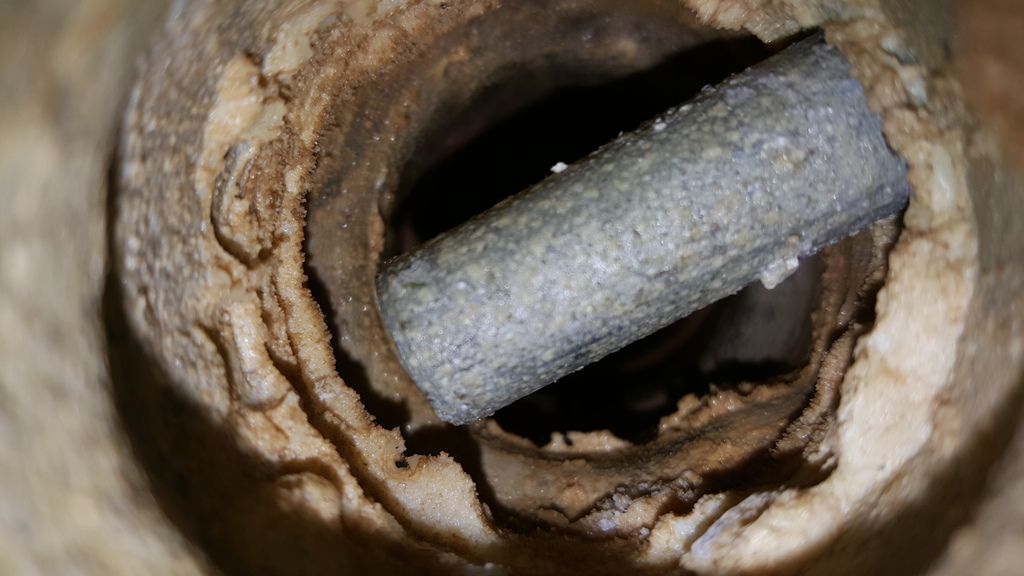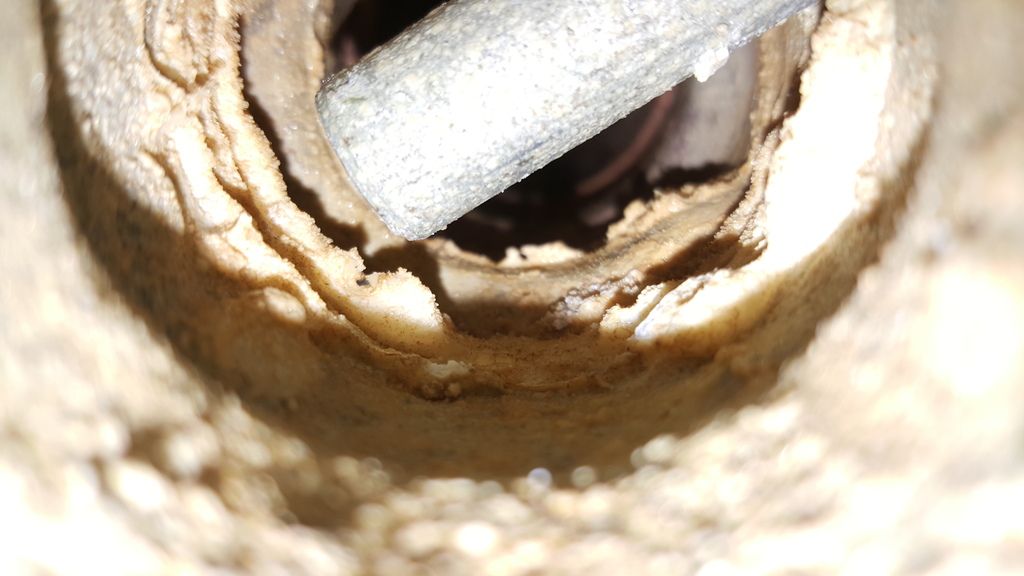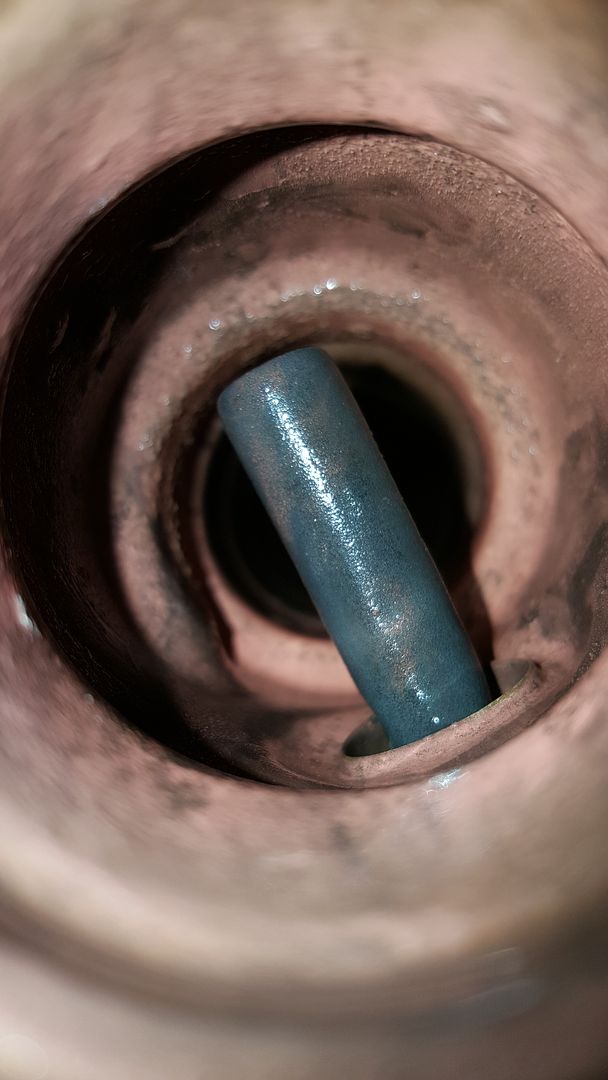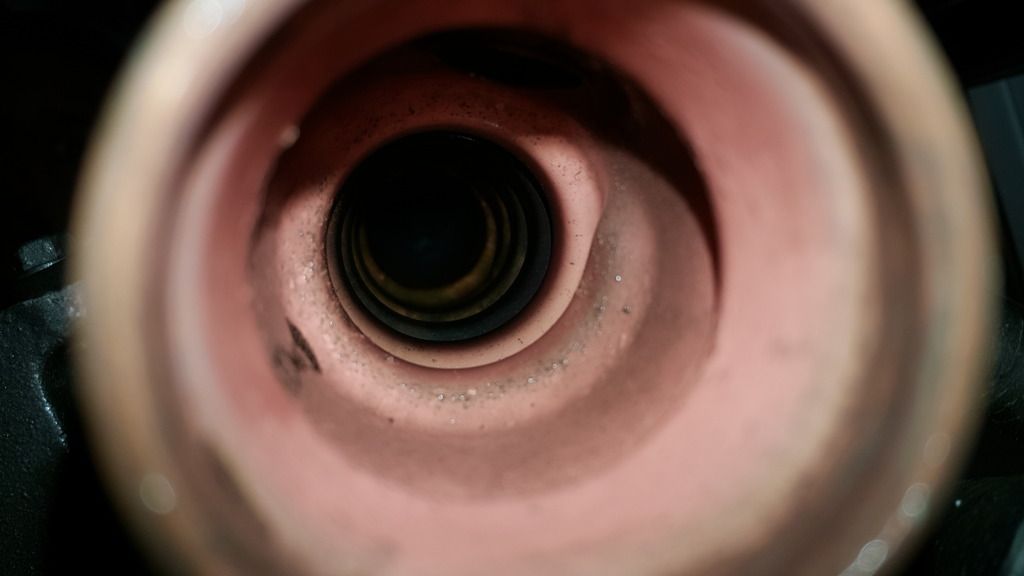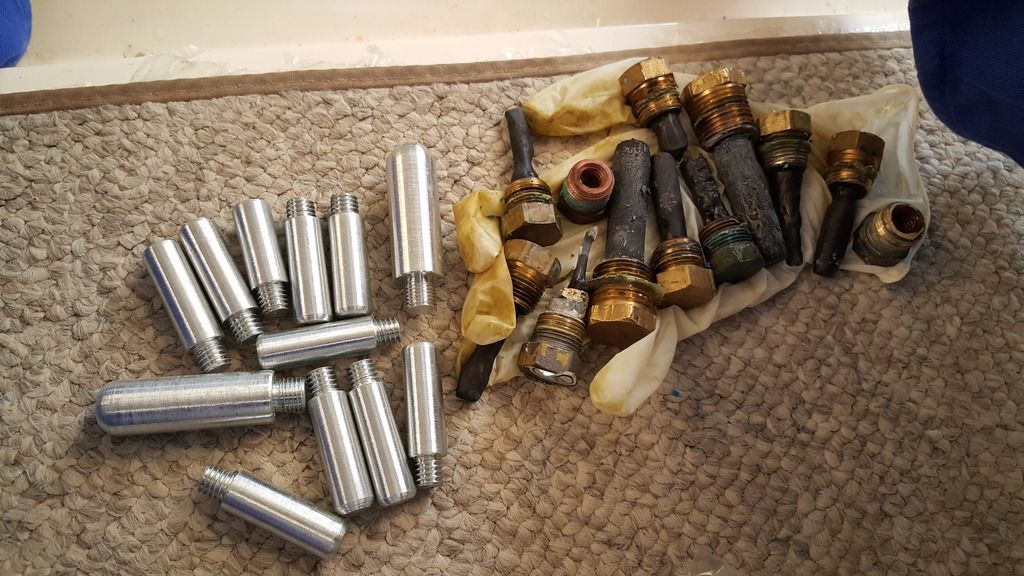peterkvs
Active Member
After I purchased my 1999 400 Sundancer I decided to do ALL the maintenance tasks for the boat in order to establish a maintenance baseline. One day while replacing a leaking hose on the transmission cooler I noticed that the cooler was 30% blocked, or more, and that the zinc had broken off and was a flower in the cooler. So I decided that I should flush the raw water system of both engines. After some research I decided to use Rydlyme. It had good reviews and was environmentally friendly and so easy to dispose of. It turns out this was a pretty easy DIY project and the results were excellent. I bought 5 gallons of Rydlyme and had it shipped to my office for about $125. I decided build a circulation system with a sump pump (from Harbor Fright) and hoses and flush the solution into the fuel cooler (which is the first thing after the strainer), and through the water pump, heat exchanger and transmission cooler. I started with the starboard engine and then plumbed from the output of the transmission cooler to the input of the fuel cooler on the port engine. I exited the transmission cooler and ran a hose up into the bucket with the sump pump. To run the solution this way, you must remove the water pump impellers, and if the zincs are good you need to remove them as well.
I closed the raw water intake valves for the engines ( I always put a note on the keys to remind me to open them) and removed the hoses from the fuel cooler input and transmission cooler output and measured the coupling. Then took off for Lowes to find suitable fittings to adapt to the sump pump.
After a bit of searching and thinking I built these two adapters to connect to the engines.
The first one connects to the fuel cooler and provides a 1.5” barb fitting to connect the hose to the engines.

And this one connects to the output of the transmission cooler.

Then I made a few more measurements and built some hoses using cheap sump pump drain hose. The hose was a bit of a pain to work with and leaked badly on the barbed fittings until I realized you could wrap some 6” pieces of hose around the hose and barb which would cushion the hose clamp and allow the pressure to distribute and seal the hose to the barb.
Hose from Sump Pump to Engine

Hose from Starboard Engine to Port Engine

Drain from port engine to bucket

Picture of system installed

That cheap flat hose likes to kink too, so you have to put some thought into how to run it so it doesn’t make any sharp bends. It also stretches like crazy, and I was afraid it would burst, but it did not. The solution really foams up the first hour or so and therefore I put the 5 gallon bucket in a large pail in case it overflowed.

I ran fresh water through the system first in order to find and fix any leaks, which I did. Then I drained as much of the water as possible, poured the rydlyme into the 5 gallon pail, started the pump and kept topping up the bucket with a hose until I had a nice circulation going on. All the foam was from the rydlyme reacting with all the marine growth in the raw water system. I let it run for 4 hours. After about 2 hours the foaming went away and the solution just kept circulating. I suspect when the foaming subsided that most of the deposits were gone, but I just kept flushing to make sure.

After four hours I stopped the system and reclaimed and saved as much of the rydlyme solution as possible so that I would have it to service the Gen Set and AC systems in the future. I put lots of water into the buckets and frequently changed it while circulating until it was basically clear water.
Then I replaced the impellers, installed new zincs, put the hoses back, opened the seacocks, bled the strainers, started the engines and checked for good flow and leaks. Upon inspection of the heat exchangers they were sparkling like new. Also, the operating temps came down about 10 degrees. I hope this helps anyone else that has the do it yourself curse like I do.
Cheers and good luck,
Pete
I closed the raw water intake valves for the engines ( I always put a note on the keys to remind me to open them) and removed the hoses from the fuel cooler input and transmission cooler output and measured the coupling. Then took off for Lowes to find suitable fittings to adapt to the sump pump.
After a bit of searching and thinking I built these two adapters to connect to the engines.
The first one connects to the fuel cooler and provides a 1.5” barb fitting to connect the hose to the engines.

And this one connects to the output of the transmission cooler.

Then I made a few more measurements and built some hoses using cheap sump pump drain hose. The hose was a bit of a pain to work with and leaked badly on the barbed fittings until I realized you could wrap some 6” pieces of hose around the hose and barb which would cushion the hose clamp and allow the pressure to distribute and seal the hose to the barb.
Hose from Sump Pump to Engine

Hose from Starboard Engine to Port Engine

Drain from port engine to bucket

Picture of system installed

That cheap flat hose likes to kink too, so you have to put some thought into how to run it so it doesn’t make any sharp bends. It also stretches like crazy, and I was afraid it would burst, but it did not. The solution really foams up the first hour or so and therefore I put the 5 gallon bucket in a large pail in case it overflowed.

I ran fresh water through the system first in order to find and fix any leaks, which I did. Then I drained as much of the water as possible, poured the rydlyme into the 5 gallon pail, started the pump and kept topping up the bucket with a hose until I had a nice circulation going on. All the foam was from the rydlyme reacting with all the marine growth in the raw water system. I let it run for 4 hours. After about 2 hours the foaming went away and the solution just kept circulating. I suspect when the foaming subsided that most of the deposits were gone, but I just kept flushing to make sure.

After four hours I stopped the system and reclaimed and saved as much of the rydlyme solution as possible so that I would have it to service the Gen Set and AC systems in the future. I put lots of water into the buckets and frequently changed it while circulating until it was basically clear water.
Then I replaced the impellers, installed new zincs, put the hoses back, opened the seacocks, bled the strainers, started the engines and checked for good flow and leaks. Upon inspection of the heat exchangers they were sparkling like new. Also, the operating temps came down about 10 degrees. I hope this helps anyone else that has the do it yourself curse like I do.
Cheers and good luck,
Pete





